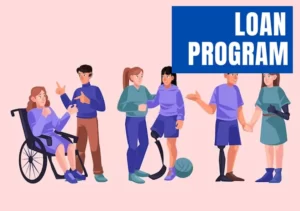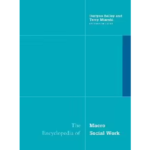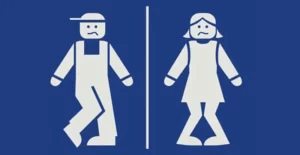Stanley Wenocur and Steven Soifer
In their comprehensive analysis of the prospects for community organization within social work in the next century, Stanley Wenocur and Steven Soifer of the University of Maryland begin with the observation that “social work may be the only profession in the United States whose Code of Ethics enjoins us to promote the general welfare of society.” Yet, although social workers have been involved in various aspects of community organizing for over a century, it has never been defined as the mainstream activity
by the profession due to the inherently conservative bias of professionalization.
Wenocur and Soifer argue that the focus on services is the distinguishing characteristic of community organizing within social work. In order to maintain this focus in the years ahead, however, community organizers will have to develop a “values-driven agenda” and create broad-based coalitions that transcend class, race, and geographic lines. They sketch out an ambitious agenda for the future that includes greater collaboration among various centers for the education of community organizers, ongoing experimentation with new community organizing models, the development of a national and international database of community organizing efforts, and research on the relationship of funding sources to the empowerment of community participants.
Stanley Wenocur is a professor of social work and Steven Soifer is an associate professor of social work at the University of Maryland of Baltimore, where they teach courses on community organization, social action, and social change. Dr. Wenocur is active in a variety of community organizations and community planning projects. Among his many publications, he is the co-author (with David Hardcastle and Patricia Powers) of a new book on community-based practice entitled Community Practice: Theories and Skills for Social Workers (New York: Oxford University Press). Dr. Soifer has organized low-income housing and trailer park residents and has written widely on organizing methods. His publications include The Socialist Mayor: Bernard Sanders in Burlington, Vermont.
Introduction
What are the prospects for community organizing (CO) in the 21st century or, more modestly, maybe for the first decade of the new era? To answer that question, we need to briefly review the current state of CO and the social, political, and economic conditions that are now shaping it and may continue to exert influence in the future. Because no profession holds a monopoly on who practices or benefits from community organizing work, our discussion includes CO in social work but necessarily goes beyond it as well. Finally, although our special interest in this essay is on grassroots organizing, we define CO inclusively to apply to social planning, community development, and social action work in all its variations.
A Few Words About CO in Social Work
Social workers have always been involved in community organizing in many different ways, from
Page 1
neighborhood-based organizing and community development to social planning, service coordination, fund-raising, advocacy, and social action. Social work in the United States began to take shape as a profession during a period of progressive reform that is, from around 1900 to the start of World War I. The notion of helping poor individuals and at the same time reforming the conditions that contributed to poverty and human misery were built into social work’s mission, largely a legacy of the settlement house movement. This mission was strongly reinforced in the Depression years during the battles to create a federal system of social protections, the basics of the modern welfare state (Wenocur and Reisch,1989). It was re-energized during the War on Poverty and the social movements of the 1960s.
These three periods, the Progressive Era, the Depression years, and the Civil Rights Era, generated the greatest amount of reformist community organizing effort within social work (and outside of it) (Trattner, 1984). As a result, social work may be the only profession in the United States whose Code of Ethics enjoins us to promote the general welfare of society: by advocating for policies and legislation that improve social conditions and promote social justice; by struggling to ensure equal access to resources, services, and opportunities; and by acting to eliminate discrimination and promote respect for diversity (NASW News, January 1996).
Nevertheless, within the social work profession, CO has never been a mainstream activity. Professions in the United States have a conservative bias. In a capitalistic society, they seek to advance the financial security and status of their practitioners by creating and controlling a market for services that only they are licensed to provide (Larson, 1977). To do this, professionals Must attend to the requirements of their legitimators and financial supporters. Because the legitimacy and salaries of social workers depend heavily on governmental and philanthropic support, this means a predilection for operating within the dominant values of their funders, values that emphasize individual responsibility for failure over systemic deficiencies and injustices. Consequently, social work primarily trains and supports professionals who will provide services to individuals and families rather than professionals who will work to change the system (Wenocur and Reisch, 1989).
Nevertheless, the profession has always managed to keep a spark of reform alive, and will probably continue to do so in the future, Many social workers are attracted to the field because of its humanist ideals. But also, it is in our self-interest to maintain a reformist thrust, In order to develop and maintain human service organizations in which social work expertise (i.e, an MSW or BSW degree) is required as a condition of employment, it behooves the profession to train some of its members to advocate for the retention of existing services in the face of threatened cutbacks and to get new services established, organized, and funded to meet emerging needs—hence, to train community organizers.
Schools of social work have trained community organizers since their earliest years, as, for example, with past training for Community Chest (now United Way) and health and welfare council work. Although professional positions in these types of organizations no longer fall almost exclusively to MSW social workers, as they once did, community organizers presently still work in this arena, as, for example, with United Way staff employed in social planning, government relations, and fund-raising positions. They also work, alongside similarly employed non-MSWs, in many other local, state, and federal level
Page 2
organizations, whose efforts center basically around advocacy, planning, coordination, and development of various types of human services and safety net protections. Some examples might be a national children’s advocacy organization like the Child Welfare League of America, or a state project to plan for the deinstitutionalization of residents of state-ad ministered facilities or a city or county Department of Homeless Services. These sorts of services, provided mainly by governmental and private nonprofit organizations, span many fields of practice, such as aging, family and children, health and mental health, occupational social work, education (school social work), and corrections.
The focus of community organizing around services is probably the feature that most distinguishes CO in social work from CO outside of it. At the local level, service provision and social action often combine within the same organizations and even the same social workers. Hyde (1992) refers to these organizations as “social movement agencies,” hearkening back to the settlement house, in which “the explicit pursuit of social change is accomplished through the delivery of services” (p. 122).
Social work-trained community organizers also work in a large assortment of local and state-level, community-based citizen organizations, aimed at neighborhood preservation and development, cultural understanding, social and economic development, and liberal and radical social reform. Their organizational forms include neighborhood and civic associations and coalitions of these groups; parish organizations; broad-based church-sponsored organizations; community, housing, and tenant organizations; human relations agencies; labor unions; community development corporations; political campaigns; and social movement organizations such as civil rights, welfare rights, environmental protection, and peace.
Post-1960s Conservatism and Community Organizing
Richard Nixon’s election in 1968 on a law and order platform heralded a political shift to the right in the country, especially a growing mistrust of “big government.” This direction has continued to the present with few deviations, even with Democratic presidents and/or a Democratic Congress. In the early 1970s, an electorate, weary of a decade of turmoil and social protest, began to express its disapproval over challenges to the time-tested values of family, hard work, and self-reliance. Many also took offense at a perceived governmental favoritism toward minorities and poor people. By the 1980s and 1990s, influenced by an increasingly powerful religious and intellectual right-wing and discouraged by a steady drop in the standard of living (recall the anomaly of rising inflation and rising unemployment, dubbed “stagflation, of the mid-1970s), many voters expressed their resentments by supporting legislation aimed at cutting taxes, limiting and cutting expenditures for social programs, deregulating the private corporate sector, restricting immigration, and denying affirmative action. Following their conclusion, Republican proposals in the 1990s would unravel much of the national welfare state and return the country to a pre-1930s system of state welfare.
In the conservative aftermath of the 1960s, many observers thought that community organizing was likely to be as dead as the War on Poverty. With the fading of the student movement and cuts in programs such as Peace Corps and VISTA. (except during the Carter administration), it became harder to recruit young people into organizing jobs, and with reductions in funds for all sorts of social programs, indeed fewer jobs were available. Schools of social work experienced a decline in federal grant monies for social work training of any kind, as well as a drop in interest in their community
Page 3
organizing programs (though not a drop in general enrollment). But community organizing was far from finished. According to one estimate (Delgado, 1994), “There are currently over 6,000 community organizations in operation in the U.S. Most are local, unaffiliated groups, initiated out of local residents” need to exert control over the development of their communities” (p. 12). When other types of CO groups with liberal political aims are taken into account—as, for example, local, statewide, and national advocacy organizations to improve child care and protect consumers, the rights of mental patients, and community development corporations (CDCs)—the numbers are much higher. How can we account for all of this effort in conservative times? We suggest at least five important reasons for the continuation and growth of CO over the last 25 years.
First, many social movements rooted in the 1960s never really ended. Those that continued spread beyond the narrow confines of the college campuses (Boggs, 1995; Flacks, 1990). Some fall under the rubric of “new social movements”; these characteristically are organized around “communities of interest” or geography, focus more on cultural and identity struggles than class issues, and “reject hierarchically based forms of social interaction” in public and private relationships and structures, such as the family, business, and the state (Fisher and Kling, 1994, p. 9). Accordingly, national and local movement groups (e.g. peace, environment, gay rights, feminist, communitarian) multiplied, addressing a range of diverse issues with a broad mix of ideologies and strategies: direct action, empowerment and community self-help, internal consciousness-raising, and alternative lifestyles and value changes. All in all, in the last 25 years, probably millions of people mobilized to get governmental and corporate action on issues like toxic waste dumping, nuclear power plants, utility rates, home mortgage loan discrimination, nursing home abuse, abortion rights, civil rights, gay rights, women’s rights, AIDS policies and programs, homelessness, neighborhood preservation, rights of the handicapped, nuclear disarmament, war and oppression in Central America, and apartheid in South Africa. All these movements centered in some way around basic “social contradictions (class bureaucratic, patriarchal, ecological, and racial) that permeate advanced capitalist societies” (Boggs, 1995, p. 349). These movements had practical and far-reaching effects on American life, and internationally.
They catalyzed the formation of alternative institutions (cooperatives, alternative media, book-stores, clinics, etc.); they have helped sustain electoral coalitions with progressive agendas; they have given rise to a new critical discourse and a radical intelligentsia both within and outside the universities, and they have stimulated the rebirth of student activism in the late 1980s. (Boggs, 1995, p. 350)
They led to legal and symbolic reforms and greater government and corporate accountability. Although they did not alter the distribution of income, perhaps it is fair to say that they helped to make “empowerment” a watchword for the 1990s.
Second, community organizing in the 1970s and 1980s built its own support system and, in so doing, took a major step toward defining itself as a profession. Here we refer to the creation by 1992 of some two dozen national and regional organizer training centers or “intermediaries” (Delgado, 1994). Often connected spiritually and intellectually to the ideal of participatory democracy espoused during the 1960s, many centers were formed by 1960s activists to create and refine different models of community organizing, to spread CO activity by providing training and technical assistance, and in some cases to
Page 4
build a network of organizations with sufficient mass and resources to promote initiatives beyond the local neighborhood level. Some of the best-known and most influential centers were formed long before the 1960s but have gone through growth and change within the last 25 years—for example, the Industrial Areas Foundation established by Saul Alinsky in 1940 and the Highlander Folk School, now the Highlander Research and Education Center, begun by Myles Horton in 1932 and incorporated in Tennessee in October 1934. Some other well-known centers include the Midwest Academy; the Center for Community Change; the Institute for Social Justice (a training arm for ACORN); the National Training and Information Center (a training arm of National People’s Action); the Center for Third World Organizing; the Pacific Institute for Community Organizing; and the Education Center for Community Organization, a project of the Hunter College School of Social Work in New York City. Training centers vary as to their models of organizing, their aims, their issue or constituent focus, and their scope, and often they compete with one another for clients or turf, resources, and public renown. Still, they have begun to lay an institutional foundation under community organizing work.
Third, community organizers became more sophisticated about fund-raising. With cutbacks in governmental funds for community organizing and human services of all kinds, managers of nonprofit organizations, including CO groups, in a now highly competitive resource environment, were forced to learn marketing and fund-raising skills. The establishment of several liberal foundations also helped CO and advocacy organizations generate resources. The fund-raising strategies that evolved—ever more dependent on computer technologies—included grant writing, special events, direct mail, phonations, membership drives, forming “alternative funds” to United Way, and competing for workplace dollars through payroll checks. offs, and others (Flanagan, 1982). The growing alternative fund movement has been especially important for women’s groups, environmental groups, African-American groups, and other social change-oriented organizations, all of which have formed separate alternative funds in a number of local urban communities to support their special interests. Today, alternative funds operate in almost every state, and in 1994 they raised more than $158 million through payroll deductions (Responsive Philanthropy, Spring 1995).
Two additional fund-raising strategies developed in the 1970s also bear special mention here: door-to-door canvassing and religious institutional contracting. The former, adopted by Citizen Action, applied the technique of door-to-door product sales to solicit broad-based support for the Citizen Action agenda and organization. Canvassing requires a whole separate “sales” staff to solicit nightly in selected neighborhoods with strict dollar quotas that must be met. The high costs of maintaining a separate canvassing operation and the requirements for education and coordination with the community organizing program are drawbacks of this strategy.
The latter approach, religious institutional contracting (our name), was developed by the Industrial Areas Foundation (IAF). Under this arrangement, national IAF staff members develop a contract with an interdenominational sponsoring committee of religious institutions (churches, synagogues, mosques) in a prospective community. The sponsoring committee must be committed to addressing community issues by building a broad-based interdenominational, culturally diverse organization. The contract provides funding for three years (from $150,000 to $250,000) for a TAF-trained lead organizer and/or other organizers, TAF supervision and consultation, and IAF national and local training of organization leaders on an ongoing basis (IAF, 1990).
Page 5
The significance of an approach that proceeds from a base of institutional support is (1) the organization can concentrate on winning issues rather than on fund-raising, (2) it weaves powerful connections into the organization’s fabric, and (3) it supports a slow and careful leadership development and organization-building process. Using its institutional strategy, the IAF has developed an extensive national network of JAF organizations and a professionalized organizational structure and
staff of decently paid organizers who can maintain community organizing as a lifetime career choice. The drawback of this approach, as with any resource dependency, is that the organization may need to avoid issues that its sponsors find too difficult to confront.
Fourth, some community organization efforts shifted away from “challenging the establishment” to more collaborative strategies involving partnerships between local community groups, government officials, and corporate leaders.
A primary strategy was the formation of community development corporations (CDCs), which took root in very small numbers in the 1960s but grew to several thousand by the mid-1980s. CDCs vary greatly in size and focus, but they share several features: (1) Almost without exception they are incorporated as nonprofit, tax-exempt organizations; (2) their boards are usually controlled by residents of the communities targeted for development activity; (3) they all undertake some form of economic development, such as housing rehabilitation, construction and management, starting businesses, creating jobs for local residents, and/or operating services—all with the aim of sustaining and regenerating the social, physical, and economic life of the community; and (4) they all target their activities to a clearly defined geographic area with a high level of low-income residents (Pierce and Steinbach, 1987).
CDCs gained a strong foothold during the Carter administration (1976-1980) with the creation of the Office of Neighborhood Development and some dozen other federal programs that provided support for local staff and projects. The Reagan admini-stration cut back these programs severely, including dismantling the most significant source of CDC support, the Community Services Administration. CDCs, however, continued to thrive, having become more savvy about putting together funding streams from a variety of nonfederal sources— liberal foundations, municipal and state programs, private corporations and banks, sweat equity, and the like.
Fifth, in the last 20 years, middle-class people moved out of inner cities in large numbers. They left behind majority populations of color and greater diversity and were replaced by new immigrant groups. These varied populations often developed their own, indigenous organizations based on “communities of interest” that tended to be centered around “a combination of racial solidarity and concern about a the specific set of issues”
(Delgado, 1994,p. 46). Organizations in communities of color range along the CQO spectrum from single- and multi-issue groups to social movement groups to CDCs. They have tended to develop apart from the organizing centers mentioned earlier and to share a worldview based in race relations. Their organizers are typically indigenous to the community in which they are working (Delgado, 1994).
Whither CO in the 21st Century?
It is hard to tell whether the conservative climate of the last 25 years will follow us into the 21st century. Much depends on how the dramatic restrictions in social programs come to be interpreted—whether as a nation we come to see the public good narrowly in terms of how “I” am doing or whether we come to see good as a function of how “we” are doing as an interdependent whole. In the latter part of the 20th
Page 6
century and the first decade of the 21st century, community organizing will have an important part to play in the struggle to define and redefine fundamental American values.
This struggle will be complicated by significant changes in the political economy that are already at work. One of the most pervasive of these changes is the shift to a postindustrial service economy and its globalization. Economists agree that the standard of living has actually been dropping since the 1960s and that we have seen an ever-widening gap between rich and poor reach a point where the middle class may be disappearing altogether (Cassidy, 1995). Although the “causes” for this economic situation are multiple, complex, and interrelated, among the often identified reasons are the growth of national and multinational corporations and a concomitant inability to regulate them, the availability of cheap foreign labor for manufacturing in underdeveloped countries, effective foreign competition from developed countries, the decline of the labor movement in the face of American deindustrialization, the availability of cheap new immigrant labor, the advance of computer technology and requirements for computer literacy, and the lack of opportunities for retraining unemployed and underemployed workers.
Another change, mentioned earlier, has been the abandonment of our central cities by the middle classes, especially whites. There are lots of reasons for this as well. Real estate development, a cornerstone of the market economy, and the businesses that revolve around it—banks, shopping malls, builders, and so on—invest heavily in promoting the American dream of a house in the suburbs. Older, decaying cities, dependent on taxes on declining property values, do not have the constitutional power to generate the resources they need to rebuild their physical and social infrastructure—buildings, parks, schools, social services, police protection, and so on. Consequently, inner-city communities are increasingly fuming into majority populations of color, largely Black or Hispanic, and a diverse mix of other immigrant groups and poor and working-class whites.
Conservative control of government obviously exacerbates all of these trends. It generally implies cutting federal resources for social entitlements and social and economic development programs, selling the survival of the fittest ideology, and deregulating business competition and social and environmental protections.
What are some of the implications for community organizing? One of the more apparent implications is that local governments, which are often the targets of CO action, will be increasingly unable to respond in any significant way. They simply do not have the necessary resources by themselves. Stated differently, municipal power to effect community change is limited—ironically, at a point in time when racial and ethnic minority group members have been able to gain control of many larger city governments. Solutions to inner city problems will have to be dealt with on a regional level (Rusk, 1996) and/or a state level, and, unfortunately, this is a political formula pregnant with class and racial politics. From an organizing perspective, we all live locally and experience life through a web of local relationships, but local institutions are less and less subject to local control. Therefore, community organizers will have to learn how to create cross-neighborhood, citywide, city-county, and statewide organizations. This means creating interracial, interdenominational, and transclass organizations coalitions, in all likelihood, with their own special knowledge and skill requirements. Cultural, racial, and identity politics, fraught with conflict as they are, make this task exceedingly challenging. The glue here will have to be something
Page 7
that transcends local Issues, most likely a values-driven agenda. Broad-based TAF organizational models that proceed from this direction may have some potential to show the way.
The ineffectiveness of local governments to solve community problems should not turn citizens away from local governmental participation, nor from electoral participation at any level. Indeed the Right has gained political influence by increased participation in the electoral process with a good deal of attention to the grassroots. If action is devolving more and more from federal to state governments, then we need to be able to influence state decisions. Moreover, despite the valiant efforts of non-profit organizations such as Greenpeace and Amnesty International, only the government has sufficient power to counter and regulate the excesses of national and multinational corporations.
The delegitimization of government is a right-wing agenda item aimed at delegitimizing private enterprises and voluntary organizations as the solution to social and economic problems. Without the strong hand of government, citizens have little hope of controlling the policies of private corporations. Nor does the voluntary sector have the resources to be able to make up for the loss of public human services, to create replacement jobs and job retraining, or to rebuild the supply of affordable housing. In this regard, CDCs remain useful for small-scale solutions and as important instruments for learning. In our view, however, they should not be seen as an alternative to governmental intervention. If the government is to regain its proper place in civic life, future community organizing will have to pay a lot of attention to political and economic education, to the re-creation of Civic sensibility, and to electoral politics. A number of national organizing networks, such as ACORN and Citizen Action, have experience with electoral politics that should be further developed and shared.
The labor movement should be an important member of any progressive coalition, Labor unions have a great deal of institutional power by virtue of their location in the economy and the legislation that protects their activities. This legislation needs to be strengthened. Prospective and current organizers need to become familiar with the labor movement. For many young organizers, labor unions have simply not been part of their reality or, if they are, unions have been tainted with the negative stamp of the Reagan era. In France in the fall of 1995, when the government proposed a reactionary social welfare, the public employee unions went on strike until more acceptable alternatives could be negotiated. Why couldn’t that happen in the United States? Maybe it will in the 21st century. Currently, new AFL-CIO leadership is making a significant reinvestment in labor organizing and political education. Citizen Action grew out of a citizen-labor-energy coalition that began in 1977. The IAF has some local projects in conjunction with labor unions, Can these experiences and relationships be expanded? How can that coalition be rebuilt and strengthened?
As we approach the 21st century, community organization has the potential, as it has not had before, to create a national —even international—progressive, organizing agenda, with the people Power to put it into action. To get it started would take a ‘major conference to bring together the leadership of national and regional CO training centers and leaders from various movement orga-nizations, schools of social work, CDCs, and other interested parties. Perhaps a megadose of right-wing politics and policies will generate enough unity of purpose for such an event to happen.
Several positive results could come out of this kind of conference. First, it would help build and
Page 8
strengthen the links between community organizing networks, various intermediary training centers, community development corporations, and schools of social work. Given the past distance between many of these community organizing networks and schools of social work, reinforcing these connections could be beneficial to all parties. Second, the conference could help pave the way for the possible confederation of the various community organizing networks in the United States. Although personal rivalries, turf struggles, and different models and styles of organizing permeate the community organizing movement, certainly these issues are no greater than those faced by the American Federation of Labor (AFL) and the Congress of Industrial Organizations (CIO) prior to their merger in 1955 (Peterson, 1963). Movement in this direction in the 21st century is imperative if the community organizing networks are to achieve their maximum potential influence.
Third, by involving schools of social work, an atmosphere could be created to impel more schools to implement community organizing/community development concentrations or tracks. A survey (Soifer, 1996) of the roughly 120 MSW programs across the country indicates that about 15 have full-fledged community Organizing concentrations (though many offer at least some content or a course on the topic) and only a handful have community development concentrations or courses (Soifer, 1996).
We believe that three other directions should also be taken at the beginning of the 21st century. One would be to continue the experimentation with new community organization models. The Alinsky organizing model, which is used in one form or another by all the major community organizing networks, has many strengths but also some key weaknesses, such as a tendency to avoid coalitions not of its own making. So, for example, an alternative approach, the so-called feminist organizing model, championed by the Education Center for Community Organization ECCO) at Hunter College School of Social Work, holds much promise and should be developed further. Because this approach addresses women’s fundamental self-interests, it has the potential to overcome barriers that keep many women from political activism. At the same time, it is not so exclusive that diverse coalitions could not be developed. Definitive characteristics of feminist organizing include (1) analysis of problems and issues through a gender lens; (2) attention to the process aspects of practice; (3) consciousness-raising; (4) a grass-roots, bottom-up approach; (5) efforts to overcome differences that separate women and celebrate diversity; and (6) a holistic approach that integrates and uses both rational and non-rational elements of human experience (Gutiérrez and Lewis, 1994). Other new or hybrid kinds of community organizing models should also be fully explored, including transformative approaches such as study circles and base ecclesial (of the church) communities (BECs)— communities of faith built around participation in church liturgy and reflection leading to action (Bradshaw, Soifer, and Gutiérrez, 1994; Hanna and Robinson, 1994; Reilly, 1994).
Second, it is imperative that a national ] (and ideally international) database of community organizing efforts since, at least, the 1960s should be compiled. There have been many different community organizing efforts over the last three decades, most of which have not been properly documented or even documented at all. Before this history is lost forever, efforts should be made to collect oral histories and/or case studies of these groups and catalog them along a number of different criteria (e.g., local, regional, statewide, national, or international group; organizing models) used; paid or voluntary
Page 9
taff; issues worked on; significant accomplishments; period of existence, and so on).
Third, we need to study the relationship of funding (sources, Strategies for securing funds) to the empowerment of the actors/participants. Lack of stable funding is a primary reason why many community organizing efforts fail. New information may lead us in new directions for supporting change-oriented organizations and movements, Furthermore, despite the current conservative tenor of the times, we should not assume a conservative future will follow, and therefore we should not assume that the enormous potential of the federal government for encouraging and funding progressive community-building programs cannot be recaptured.
Conclusion
This essay has suggested that, as we approach the new millennium, community organization practice is alive and well and should continue to thrive. The kind of impact CO will have on the larger political economy, however, is far from certain. Much will depend on the ability of CO practitioners to use small-scale organizing projects as building blocks for the creation of a more encompassing and enduring vision of society. To move in this direction, Community organizers need to Create opportunities for relationships and national and International through journals, Organizations, conferences, media, and perhaps the Internet—inclusive discourse that transcends but does not exclude the interests, concerns, and ideas of our many diverse, organized constituencies. One hopeful sign in this direction has been the formation of the National Organizers Alliance in Washington, D.C. Ultimately, community organi-zation needs a national, as well as an international, political, and social agenda. Ideally, this agenda will help to generate and guide the political and economic change that is sure to come in the 21st century in the direction of a more just and more peaceful national and global community.
REFERENCES
Boggs, C. (1995), Rethinking the sixties legacy: From new left to social movements, In 5. M. Lyman (Ed), Social movements: Critiques, concepts, case studies. New York: New York University Press,
Bradshaw, C,, Soifer, 8, & Gutiérrez, L. (1994). Toward a hybrid model for effective Organizing In communities of color Journal of Community Practice, 7(1), 25-41.
Cassidy, J. (1995, October 16). Who killed the middle class? The New Yorker, 113-124.
Delgado, G. (1994), Beyond the politics of place: New directions in community organizing ji He 1990s.
Oakland, CA: Applied Research Center.
Fisher, R., & Kling, J. (1994). Community organization and new social movement theory. Journal of Progressive Human Services, 5 (2), 5-23.
Flacks, D. (1990). The revolution of citizenship. Social policy, 21 (2), 37-50.
Flanagan, I. (1982). The grassroots fundraising book. Chicago: Contemporary Books.
Guttiérez, 1. M., & Lewis, E. A. (1994). Community organizing with women of color: A feminist approach. Journal of Community Practice, 1 (2), 23-44.
Hanna, M. G.,, & Robinson, B. (1991). Strategies for community empowerment: Direct-action and transformative approaches to social change practice.
Lewiston, NY: Edwin Mellen Press,
Hyde, C. (1992). The ideational system of social movement agencies: An examination of feminist health centers. In Y. Hasenfeld (Ed.), Human services as complex organizations. New- bury Park, CA: Sage.
Industrial Areas Foundation. (1990). IAF 50 years: Organizing for change. Chicago: Industrial Areas Foundation.
Larson, 8. ML. (1977). The rise of professionalism: A sociological analysis. Berkeley: University of California Press.
NASW News. (196, January). Proposal: Revision of the code of ethics. Washington, DC: National Association of Social Workers, 47 (1), 19-21.
Peterson, F. (1963). American labor unions: What they are and how they work. New York: Harper and Row.
Pierce, N. R., & Steinbach, C. F. (1987). Corrective capitalism: The rise of America’s community development corporations. New York: Ford Foundation.
Reilly, M. M. (1994). Social change from a faith perspective: Community organizing with liberation theology. Unpublished paper.
Responsive philanthropy. (1995, Spring). Newsletter of the National Committee for Responsive Philanthropy: Washington, DC: NCRP, 11-12.
Rusk, D. (1996). Baltimore unbound: A strategy for regional renewal. Baltimore, MD: Abell Foundation.
Soifer, S. D. (1996). Survey of M.S.W. programs regarding community organizing and community development curricula content. Unpublished.
Trattner, W. I. (1984). From poor law to welfare state: A history of social welfare in America. 3d ed. New York: Free Press.
Wenocur, S., & Reisch, M. (1989). From charity to enterprise: The development of American social work in a market economy. Urbana: University of IllinoisPress.










Soifer’s critique of existing approaches is thought-provoking. It’s refreshing to see an author confront the systemic barriers that hinder progress in community organization. His article motivates readers to advocate for inclusive and equitable solutions moving forward.